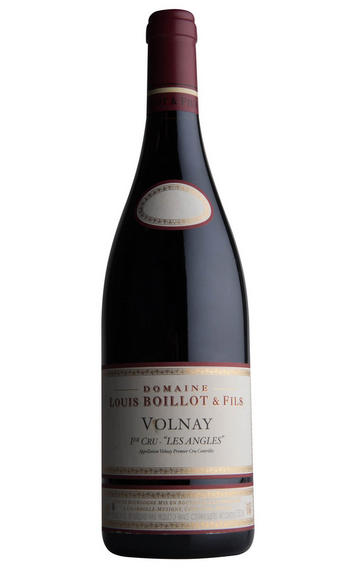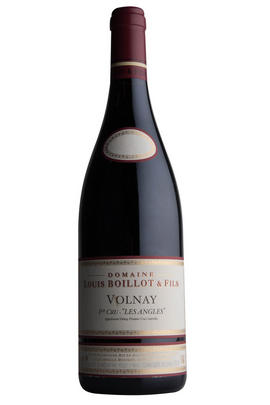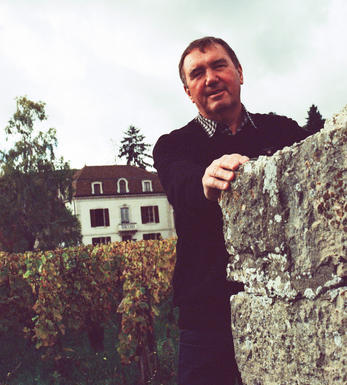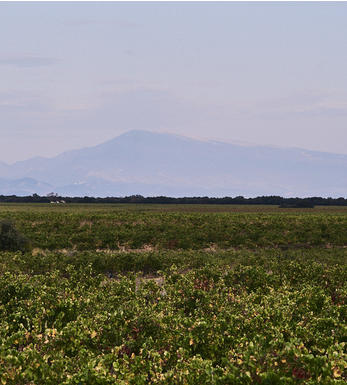
2011 Volnay, Les Angles, 1er Cru, Domaine Louis Boillot & Fils, Burgundy

About this WINE

Louis Boillot
Louis shares his cellar with his other half, Ghislaine Barthod , under their home in Chambolle, overlooking Les Feusselottes. He is part of the Boillot family from Volnay, which explains the quantity of his vineyard holdings in the Côte de Beaune.
Since striking out on his own in 2003, he has been able to maximise the potential of his many disparate small parcels – he makes 16 wines from less than seven hectares – many of which are notable for the exceptional age of their vines.
He expanded into Moulin-à-Vent in ’13 and subsequently into Fleurie, fulfilling a long-held ambition. His and Ghislaine’s son Clément is now officially in charge, while Louis focusses on his viticulture. As yet, there are no discernible changes.
In the winery
“Non-intervention” is the word here, and Louis prefers to let his old vines speak for themselves. Everything is destalked, and the wines are bottled without fining or filtration.

Volnay
The finest and most elegant red wines of the Côte de Beaune are grown in Volnay, a village which might be twinned with Chambolle- Musigny in the Côte de Nuits, for the high active chalk content in the soil and comparatively low clay content.
Whereas in earlier times Volnay was made in a particularly light, early drinking style, these days there are many producers making wines which age extremely well. The best vineyards run either side of the RN73 trunk road.- 98 hectares of village Volnay
- 115 hectares of Premier Cru vineyards (35 in all). The finest include Les Taillepieds, Clos des Chênes, Champans, Caillerets (including Clos des 60 Ouvrées) and Santenots in Meursault.
- Recommended producers: Lafarge, Lafon, de Montille

Pinot Noir
Pinot Noir is probably the most frustrating, and at times infuriating, wine grape in the world. However when it is successful, it can produce some of the most sublime wines known to man. This thin-skinned grape which grows in small, tight bunches performs well on well-drained, deepish limestone based subsoils as are found on Burgundy's Côte d'Or.
Pinot Noir is more susceptible than other varieties to over cropping - concentration and varietal character disappear rapidly if yields are excessive and yields as little as 25hl/ha are the norm for some climats of the Côte d`Or.
Because of the thinness of the skins, Pinot Noir wines are lighter in colour, body and tannins. However the best wines have grip, complexity and an intensity of fruit seldom found in wine from other grapes. Young Pinot Noir can smell almost sweet, redolent with freshly crushed raspberries, cherries and redcurrants. When mature, the best wines develop a sensuous, silky mouth feel with the fruit flavours deepening and gamey "sous-bois" nuances emerging.
The best examples are still found in Burgundy, although Pinot Noir`s key role in Champagne should not be forgotten. It is grown throughout the world with notable success in the Carneros and Russian River Valley districts of California, and the Martinborough and Central Otago regions of New Zealand.


Buying options
Add to wishlist
Description
The Boillot family has a long and rich history in Burgundy, and fortunately, Louis has a habit of holding back a little wine each year to be offered when it is at maturity. The village of Volnay is renowned for producing elegant, perfumed red wines, and this 2011 is drinking beautifully now.
The nose is delicate and lifted with crushed strawberry fruit, a touch of sousbois, subtle sweet oak spice and gentle graphite notes. The palate is energetic and fresh with a keen thread of acidity that calls out for food, while the tannins are smooth and layered. This would be the ideal partner for duck or mushroom dishes.
Adam Bruntlett, Burgundy Buyer, Berry Bros. & Rudd (November 2022)
wine at a glance
Delivery and quality guarantee